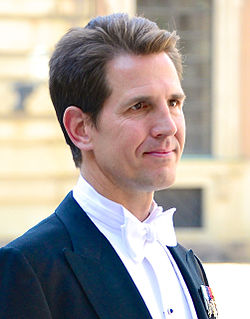Succession to the Emerstarian throne
The line of succession to the Emerstarian throne is determined by the Act of Succession of 1602 (Emerstarian: 1602's Arvslag), which put into ink the preexisting, yet mostly unwritten, succession laws of Emerstari that had been implemented since the establishment of the Kingdom of Emerstari.
The Act of Succession of 1602 describes a form of male-preference primogeniture in which the Herrers Hus reserves the right to implement an Emerstarian form of tanistry, albeit it with a three-forth majority vote and the consent of half of the Upper Synod, to elect a new monarch. Typically, this has been used in cases where a woman, a foreigner, or a person deemed otherwise unfit to succeed may be set to succeed. More recently, with the consolidation of the throne by the House of Eirikr, it has also been used to disinherit non-male-line descendants of Eirikr Segersælla; in the case of [[Elsa III Marie of Emerstari|Elsa III Marie], she was threatened by the Herrers Hus to be disinherited unless she married her third cousin once removed, Hasse Folkberg–Eirikr to ensure direct male-line descent of Eirikr in future kings. The Emerstarian constitution, in the first section of the third article of The Procedures for the General Governance, it states, "Be it that a female shall inherit, her husband shall too become the Emerstarian sovereign so to rule aside her."
Line of succession
Erik XII Georg (born 1970)
- (1) Frederik Johann Eirikr (born 1993)
- (2) Karl Olaf Eirikr (born 2017)
- (3) Rudolf Georg Eirikr (born 2018)
- (4) Margarette Frederikke Eirikr (born 2020)
- (5) Karl Olaf Eirikr (born 1995)
- (6) Harald Deitrik Eirikr (born 2019)
- (7) Jakob Valter Eirikr (born 2023)
- (8) Erika Motte Eirikr (born 2021)
- (9) Henriette Else Eirikr (born 2024)
- (10) Frederikke Nathalie Eirikr–Ljundmark (born 1997)
- (1) Frederik Johann Eirikr (born 1993)
Eligibility
The Act of Succession of 1602 also describes who is eligible to succeed to the Emerstarian throne in terms besides descent. A person may not succeed to the throne if they:
• cease to be Lutheran.
• ascend to the throne of another nation without the consent of the Herrers Hus.

